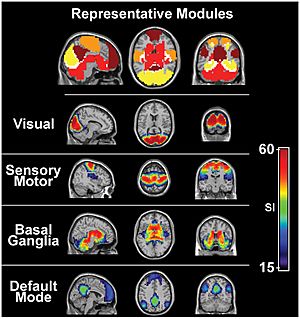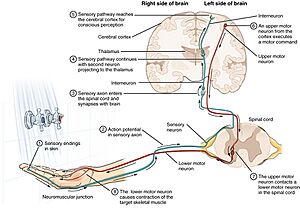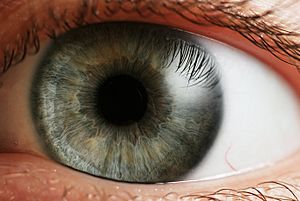Sensory nervous system facts for kids
Quick facts for kids Sensory nervous system |
|
|---|---|
 |
|
| A typical sensory system: the visual system. This picture shows how information flows from the eyes to the optic nerves and then to the visual cortex in the brain. Area V1 is a part of the brain used for seeing. | |
| Latin | organa sensuum |
The sensory nervous system is a vital part of your nervous system. It helps you understand the world around you. This system processes all the information you get from your senses.
A sensory system includes special sensory neurons, which are like tiny messengers. It also has neural pathways, which are the roads these messages travel on. Finally, parts of your brain are involved in understanding these messages. This process is called perception.
We usually talk about five main senses: sight, hearing, touch, taste, and smell. But there are other senses too, like balance and sensing what's happening inside your body. Your sense organs are like special tools. They turn information from the outside world into signals your brain can understand. This helps you create your own perception of the world.
The receptive field is the area that a sensory organ or cell can respond to. For example, the part of the world your eye can see is its receptive field. For a single rod or cone in your eye, its receptive field is the tiny bit of light it can detect. Scientists have found receptive fields for your visual system, auditory system, and somatosensory system.
Contents
How Sensory Systems Respond to Stimuli
Your sensory systems help you deal with the world. They help your body stay balanced (homeostasis). They also help you know when to do certain things, like sleeping when it's dark. And they help you find good things, like food, or avoid bad things, like danger.
Sensory systems tell your brain four main things about a stimulus:
- Type: What kind of stimulus is it? (Like light, sound, or touch).
- Strength: How strong is it? (How bright is the light? How loud is the sound?).
- Location: Where is it coming from? (Is the sound from your left or right?).
- Duration: How long does it last? (Was the touch quick or long?).
For example, your ears use the arrival time of a sound and differences in sound waves to figure out where a sound is coming from. Different mechanoreceptors in your skin respond best to different kinds of touch, like a sharp poke or a soft brush. Receptors send signals in certain ways to show how strong a stimulus is. The location of the stimulated receptor tells your brain where the stimulus happened. How long the stimulus lasts is shown by how long the receptors keep sending signals. All these signals travel to your brain through special nerves called afferent neurons.
Senses and Receptors: Your Body's Detectives
People have always wondered how many senses we have. Ancient thinkers like Gautama Buddha and Aristotle named five 'traditional' human senses. These are touch, taste, smell, sight, and hearing. These five are still widely accepted today.
But scientists now know we have more senses! These include nociception (sensing pain), equilibrioception (sensing balance), kinaesthesia (sensing body movement), and thermoception (sensing temperature). Some animals even have special senses we don't, like sensing magnetic fields or electric currents.
Receptors: The Starting Point
Every sensation begins when a special receptor reacts to a physical stimulus. Think of receptors as tiny sensors. They are usually put into four main groups: chemoreceptors, photoreceptors, mechanoreceptors, and thermoreceptors.
Each type of receptor takes a specific physical signal and turns it into an electrical signal. This electrical signal is called an action potential. This signal then travels along afferent neurons to specific parts of your brain. There, your brain processes and understands the signal.
Chemoreceptors: Chemical Detectives
Chemoreceptors, or chemosensors, are like chemical detectors. They find certain chemical signals and turn them into electrical signals. There are two main types:
- Distance chemoreceptors help you smell. They find chemical signals in gases through special cells in your olfactory system, which is your sense of smell.
- Direct chemoreceptors find signals in liquids. These include your taste buds in your gustatory system (your sense of taste). They also include receptors in your aortic bodies that check the amount of oxygen in your blood.
Photoreceptors: Light Sensors
Photoreceptors are amazing cells that can turn light into an electrical signal. This process is called phototransduction. There are three main types:
- Cones are photoreceptors that help you see color. Humans have three types of cones. Each type responds best to short (blue), medium (green), or long (yellow/red) wavelengths of light.
- Rods are very sensitive to light intensity. They help you see in dim light. Animals that are active at night, like owls, have many more rods than cones. Humans have about 20 rods for every cone.
- Ganglion Cells are found in your retina (at the back of your eye). A small number of these are photosensitive. This means they can also detect light. They help with conscious vision in some animals and are thought to do the same in humans.
Mechanoreceptors: Touch and Pressure Sensors
Mechanoreceptors are sensory receptors that respond to physical forces. These forces include pressure or stretching. You have mechanoreceptors in your hair cells that help with balance and hearing. Most mechanoreceptors are in your skin. They are grouped into four types:
- Slowly adapting type 1 receptors are good at sensing shapes and roughness. They have small areas they respond to and react to steady pressure.
- Slowly adapting type 2 receptors respond to stretching. They have large areas they respond to and also react to steady pressure.
- Rapidly adapting receptors have small areas they respond to. They help you feel if something is slipping.
- Pacinian receptors have large areas they respond to. They are the main receptors for feeling high-frequency vibrations.
Thermoreceptors: Temperature Sensors
Thermoreceptors are sensory receptors that respond to different temperatures. Scientists are still learning exactly how they work. But we know that mammals have at least two types:
- The end-bulb of Krause, or bulboid corpuscle, detects temperatures that are warmer than body temperature.
- Ruffini's end organ detects temperatures that are colder than body temperature.
Special channels in your cells, like TRPV1 and TRPM8, act like tiny thermometers. TRPV1 helps you feel warmth and heat. TRPM8 helps you feel cold. These hot and cold sensors send their signals through different nerve fibers. This means your brain gets separate information about hot and cold. Each sensory receptor has its own "labeled line" to send a simple sensation to your brain.
Nociceptors: Pain Detectors
Nociceptors respond to things that could harm your body. They send signals to your spinal cord and brain. This process, called nociception, usually makes you feel pain. You have nociceptors in your internal organs and on the surface of your body. Some nociceptors only respond when tissues are actually damaged. These are called "sleeping" or "silent" nociceptors.
- Thermal nociceptors are activated by very hot or very cold temperatures.
- Mechanical nociceptors respond to too much pressure or physical damage.
- Chemical nociceptors respond to many different chemicals. Some of these chemicals are released when tissues are damaged. They also help you detect the spiciness in some foods.
Sensory Cortex: Where Your Brain Processes Senses
All the signals from your receptors are turned into electrical signals. These signals travel along afferent neurons to specific areas of your brain. The term sensory cortex refers to the different parts of your brain where senses are received and processed.
For the five traditional senses in humans, these areas include the main and secondary cortices:
- The somatosensory cortex for touch.
- The visual cortex for sight.
- The auditory cortex for hearing.
- The primary olfactory cortex for smell.
- The gustatory cortex for taste.
Other senses also have their own brain areas, like the vestibular cortex for balance.
Somatosensory Cortex: Your Touch Center
The primary somatosensory cortex is in the parietal lobe of your brain. It's the main area for your sense of touch and proprioception (knowing where your body parts are). This cortex is divided into areas called Brodmann areas 1, 2, and 3. Area 3 is the most important processing center. It gets a lot of input from the thalamus (a relay station in your brain). Its neurons respond strongly to touch signals. Electrical stimulation of this area can even make you feel sensations. Areas 1 and 2 get most of their information from Area 3. There are also pathways for proprioception (through the cerebellum) and motor control (through Brodmann area 4).
Visual Cortex: Your Sight Center
The visual cortex includes the primary visual cortex (V1 or Brodmann area 17) and other visual areas (V2-V5). It's located in the occipital lobe at the back of your brain. V1 is the main relay station for visual information. It sends information to two main pathways: the dorsal stream and the ventral stream. The dorsal stream (including V2 and V5) helps you understand 'where' things are and 'how' to interact with them. The ventral stream (including V2 and V4) helps you understand 'what' things are.
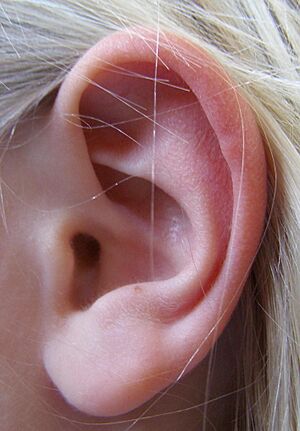
Auditory Cortex: Your Hearing Center
The auditory cortex is in the temporal lobe of your brain. It's the main area for processing sound information. It includes Brodmann areas 41 and 42. Both areas work together to receive and process signals from your auditory receptors in your ears.
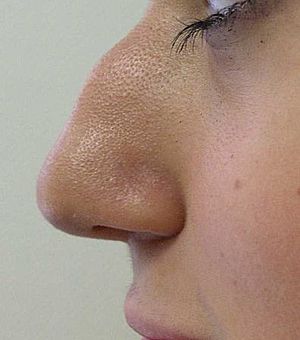
Primary Olfactory Cortex: Your Smell Center
The primary olfactory cortex is also in the temporal lobe. It's the main area for olfaction, or smell. What's special about smell and taste (at least in mammals) is that they use both peripheral (outside the brain and spinal cord) and central (brain and spinal cord) parts.
The peripheral part involves olfactory receptor neurons. These turn chemical signals into electrical signals along the olfactory nerve. This nerve ends in the olfactory bulb. The chemical sensors in these neurons are special proteins called G protein-coupled receptors. The central part involves the olfactory nerve axons coming together in tiny structures called glomeruli in the olfactory bulb. From there, the signal goes to several brain areas, including the anterior olfactory nucleus, the piriform cortex, the medial amygdala, and the entorhinal cortex. These areas together make up the primary olfactory cortex.
Unlike vision and hearing, your olfactory bulbs don't cross over. The right bulb connects to the right side of your brain, and the left bulb connects to the left side.
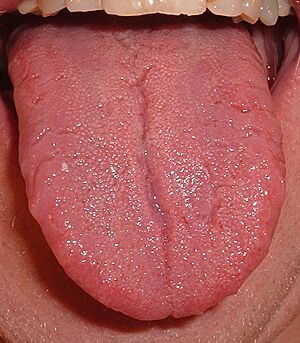
Gustatory Cortex: Your Taste Center
The gustatory cortex is the main area for taste. When we talk about 'taste' in a scientific way, we mean the sensations from your taste buds on your tongue. Your tongue can detect five main tastes: sourness, bitterness, sweetness, saltiness, and a savory taste called umami. The word 'flavor' is different. Flavor is what you experience when taste, smell, and touch information combine.
The gustatory cortex has two main parts: the anterior insula and the frontal operculum. Like the olfactory cortex, the taste pathway uses both peripheral and central parts. Peripheral taste receptors are on your tongue, soft palate, pharynx, and esophagus. They send signals to primary sensory nerves. These signals then go to the nucleus of the solitary tract in your medulla. From there, the signal goes to the thalamus, which then sends it to several areas of your neocortex, including the gustatory cortex.
How your brain processes taste is affected by touch information from your tongue, like how food feels in your mouth. Smell, however, combines with taste to create flavor in higher brain areas, like the insula.
Human Sensory System: A Quick Look
The human sensory system includes these important parts:
- Visual system (sight)
- Auditory system (hearing)
- Somatosensory system (touch, pressure, temperature, pain, body position)
- Gustatory system (taste)
- Olfactory system (smell)
- Vestibular system (balance)
- Interoceptive system (sensing internal body states)
Diseases Affecting Senses
Some conditions can affect your sensory systems:
- Amblyopia (lazy eye)
- Anacusis (complete deafness)
- Color blindness (difficulty seeing certain colors)
- Deafness (hearing loss)
See also
 In Spanish: Sistema sensorial para niños
In Spanish: Sistema sensorial para niños
- Multisensory integration
- Neural adaptation
- Neural coding
- Sensor
- Sensory augmentation
- Sensory neuroscience
- Sensory systems in fish


